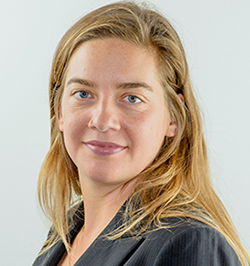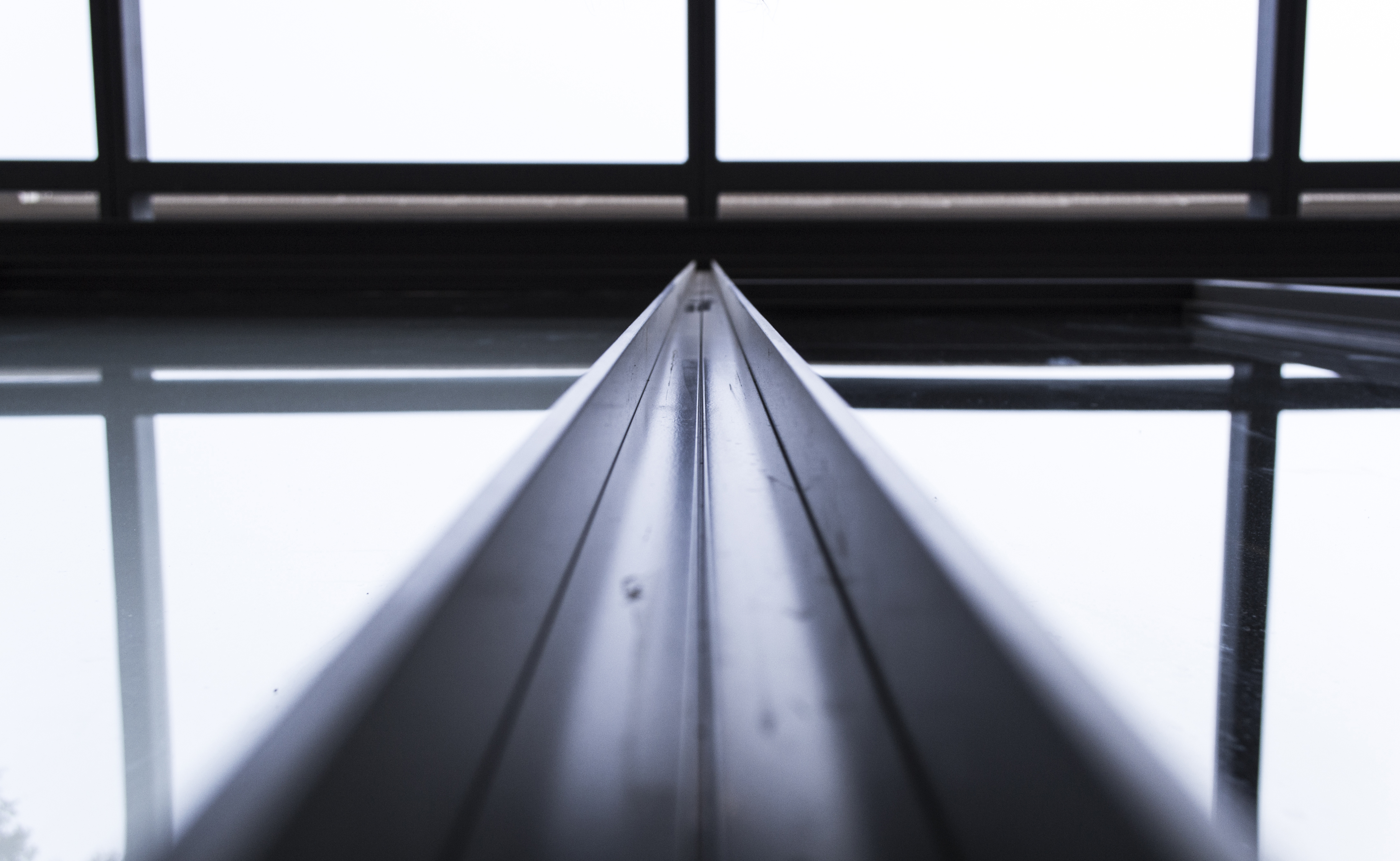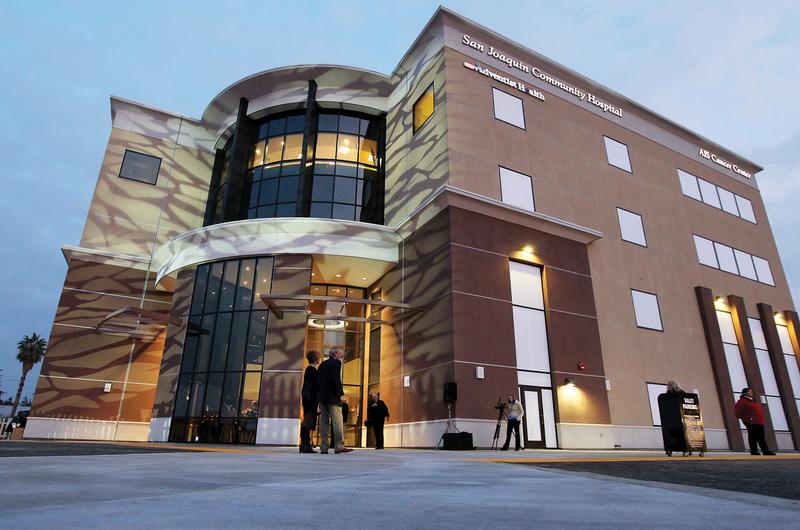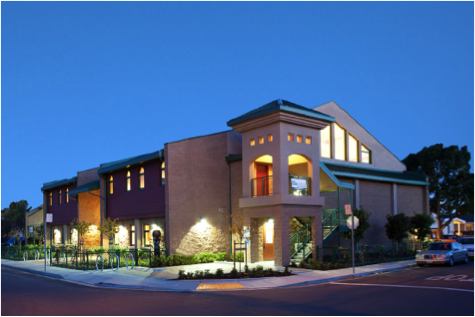Instructor Kelly Gearhart didn't follow a typical career path to become a green-building company owner, expert and educator. She took her first sustainability-related class while studying abroad in Brisbane, Australia.
That class sparked her interest in the human impact on the environment. Kelly took a break from her studies to work at MediaRep.com and the Q Network, partnered with World.org, an organization devoted to the preservation of the natural diversity of plant and animal species, eventually rising to the vice-president level. When she eventually did complete her bachelor's in religion, Kelly had, in her own words, a "pretty funky résumé," with a major in religion and a sideline as an online executive with habitat preservation and climate change mitigation experience. She turned to high tech and telecommunications consultancy, which she found challenging and rewarding, but not inspirational.
So Kelly took another step in her exploration and started volunteering at
Trees Atlanta , a nonprofit dedicated to planting and caring for urban trees. It was during this time she attended a talk at the Savannah College of Art and Design with Ray Anderson, founder of
Interface , champion of sustainability and environmentally restorative business practices. These experiences helped to shape and define her interest in combining a pragmatic approach to problem solving with an opportunity to affect her community. From there, she took on more responsibilities at larger and larger organizations such as
Southface Energy Institute . Armed with experience, knowledge and a drive to find environmentally sensitive solutions, Kelly co-founded several companies where she can work on projects, teach and volunteer.
Kelly’s ever-evolving path to find the right career is one that many of us follow. So it’s only fitting that she teaches at Extension, where learning is a continuous process and career reinvention a specialty. Not only does Kelly empathize with her students’ journeys to find passion in their work, but when that spark does illuminate, she’s able to bring her real-world experiences to the classroom.
Tell us a bit about what you're doing now.
My two companies, Triple Green Building Group and H Builders, are working hard to provide sustainability services to the built environment on the commercial and residential scale. Our projects include data centers, airports, schools, office buildings, sports stadiums, museums, and multi-family developments all the way to small commercial renovations, single-family home energy retrofits and graywater irrigation installations. We're working with the Sustainable SITES Initiative, the Bay-Friendly Landscaping program through ReScape California.
Our main focus tends to be on energy efficiency through energy analysis, energy upgrades, and the commissioning of new and existing buildings.
Do you work more with existing construction or new buildings?
We do some of both. We work a lot with new construction when there's a lot of new buildings going up. And we tend to work on renovations, upgrades and optimization when new construction is in a lull. We have some great experience in historic preservation. We've worked on projects in San Francisco, Calif., and Savannah, Ga., that have a historic component to them. We try and do everything we can to improve the energy efficiency of the project and still retain that historic nature.
Can you talk a bit about a specific project you're working on now?
We just finished up certification on one of the first LEED® for Healthcare projects. It's in Bakersfield. It's owned by Adventist Health. We achieved a LEED® for Healthcare Silver Rating. We served as the LEED® project administrators and provided quality assurance for the energy model and enhanced commissioning.
One of the challenges on a health care project is in the stringent requirements for the building systems. Right, you need to have plenty of clean, fresh air. You need to have plenty of reliable power and backup power. You need to have redundancies that aren't the same as in general commercial buildings. Some of the challenges come with trying to find energy savings in that situation. A lot of the work has to do with indoor air quality (IAQ) or environmental quality having to do with health and safety. So the LEED® ratings systems have some great adaptations for unique markets that really kind of wrap around these challenging building types like health care and data centers.
Going back to the idea of retrofitting buildings to improve their energy efficiency, what are some of the particular challenges that you face working with an existing building?
A big one can be that many of the existing buildings either don't have proper insulation or the installed insulation is much less effective than the owner might want. Upgrading existing windows, HVAC systems and lighting tend to be top opportunities for savings and comfort improvements. We have to strike a balance between costs, operational disruptions and projected benefits. Existing buildings are just that, they are already existing. Elements including the actual shape of the building and the orientation of the building are fixed. You don't have the chance to spin it in space like you do with a design. You've got plenty that you can make changes to, but some that require moving mountains to make those changes. Though sometimes it makes sense to do that.
We do a cost-benefit analysis over the life cycle of the building and its systems to evaluate how much something is going to cost relative to the expected benefit to the owner and the community and help the owner make that decision.
You work on a lot of buildings and have to say yes to a lot of projects as part of running a company, but if you had your choice, would you rather work on new buildings or existing ones?
New buildings tend to be easier because you're starting from scratch and there's a wide-open array of choices. You can choose any of the tools in your box to work on it. And that's great. And it's simpler. An existing building, in my opinion, is much more fun because it can be a puzzle that you have to untangle. You can walk into an existing building that needs a commissioning report or the owner is considering retrofits and they may know next to nothing how that building was designed or how the systems were intended to be operated. And, you get to start with figuring out and getting to know that facility and finding out where it can be improved. So, I think that new buildings have a tremendous opportunity to take the sustainability work and really push it as far as they can and achieve LEED® Platinum, Living Building Challenges™ and these sorts of goals. But the reality that our existing building stock that is much larger and much more complicated and can be more interesting is more of a challenging marketplace. I wouldn't want to pick between the two, but in terms of professional interest and what gets me excited about working on a project, it's unraveling that mystery, it's providing value in something that's difficult.
You design or retrofit a building to meet efficiency goals, perhaps even get a LEED® silver or gold certification; what happens after the backslapping is over and the seal goes on the building? What does a building have to do to maintain that level of efficiency?
In the LEED® program, one of the requirements when you agree to go through the certification process is that you will share energy and water use data with the U.S. Green Building Council (USGBC) for a period of five years after certification. What that's intended to do is not pin projects down to exactly what they predicted, matching exactly what they are doing, it's intended to develop awareness and increase the amount of data to figure out how well these systems are working, how well our predictions are helping us understand what our buildings' energy and water use will be in the future. That’s the first piece that's happening.
The next and more broad step for a LEED®-certified project is the LEED® for Existing Buildings Operations and Maintenance Program (O+M). It's designed to be a partner to all the new construction programs. Once a project has achieved certification in new construction, it can move right into the O+M program. One of our projects that have gone through this process is the California Academy of Sciences in Golden Gate Park. We supported the LEED® administration team by analyzing the mercury content, if any, in the lighting systems, and by conducting a quality control review of the commissioning process. That's a great example of a project where not only did they achieve LEED Platinum in the new construction program, they immediately rolled into the O+M program to carry forward that great design into operations. Once a project has rolled into that, their certification is only good for five years. Recertification is required every one-to-five years. They pick whatever pattern works for them. The intention is that if your building is certified in one of the new construction programs, it's just a snapshot in time of decisions made during construction and during design, and then the clock stops. The building never loses that certification. It's an award for those decisions and those actions and things that were done during that period of time. If the project wants to continue into operations, they will roll it into O+M, which is ongoing.
What's the benefit of getting that certification?
There are quite a few benefits. One of the primary benefits is that this is a third-party certification. What is happening in the market and in these projects is that designers, builders, owners and all the stakeholders are doing their best to achieve a level of sustainability during design and construction. That can be done without pursuing any type of certification; however, one of the benefits of pursuing that certification is that those claims are substantiated. The documentation is reviewed. There is a third party that says, "I see that you intended to save water, and you have a water-efficient building, and here are the calculations that demonstrate a matches b matches c." And I can see that you are indeed a water-efficient building. The market can recognize that it's been verified—similar to the USDA organic certification. That's not to say that there aren't delicious, wonderful products that you can get that are very healthy for you that have not gone through the USDA organic certification process, but it is something that the market can easily recognize and compare.
Can you discuss your teaching in general, and also specifically at UC Berkeley Extension?
In general, teaching has been one of the most enjoyable parts of my career. I really get a charge out of helping folks get excited about this topic, and find things they can really grab onto and add to their capabilities and apply to their projects. I work with folks at the very beginning of their journey, trying to understand what sustainability is. Then, folks who are a little more advanced. They understand what's happening in the market, and they want to know how to apply these principles to the built environment. They're interested in pursuing a LEED Green Associate credential, and I support them in learning about that. Likewise, I work with people interested in some of the other advanced, LEED-accredited professional programs, including LEED AP BD+C and LEED AP O+M. I also work with students who are much more advanced, who are interested in really diving into a particular topic like building commissioning, and understanding how to apply it to a specific building type or a specific situation.
Triple Green does a lot of live, in-person workshops and classes. We also do a lot of online teaching through a variety of channels. We have partnerships in Argentina, Bulgaria, Russia and Mexico, among other places, and our courses are translated into other languages and available worldwide. We work with technical publishers to provide webinars to help their audiences achieve professional credential growth. We also do a series online, where folks can learn at their own pace over a period of months and work towards any number of goals, including achieving these credentials.
What has been your experience teaching for UC Berkeley Extension?
My experience teaching for UC Berkeley Extension has been phenomenal. The staff has been extremely supportive, flexible and interested in creating a great match between the things that are present in our professional work and what students are interested in learning about. There have been a great variety of courses that I've helped develop or even take over from instructors who have moved on and continued to shape them into something that is relevant in the marketplace.
The students have come from a wide variety of backgrounds, which is one of the things that makes it so fun. You've got folks who are coming to their Extension from product manufacturing, engineering or architecture, or from the owner representative side, and they're interested in learning how to apply these strategies to their work. Either they're transitioning between careers, or they're looking to improve and get a leg up or they're fresh out of school and looking to add several more things right as they get into the market. We also have students who have used some Extension certificate programs and courses to help them leapfrog into master's degree programs. That's been very successful, and I've had the honor of writing a few letters of recommendation for students who've subsequently been accepted to the advanced degree programs of their choice.
I love hearing from our students who have recently passed an accreditation exam or are completing a LEED project. UC Berkeley Extension is an institution whose longevity and reach and open arms provide a great benefit to these students.
What advice would you give someone who's considering entering the field(s) of sustainability or transitioning into that career?
My advice is the same that I gave to a student in class last week when we were talking about final projects. She was choosing between a few topics for her final work and said, "I could do this, since I have some background in it, or, there's this other project … " and as she began discussing the second option, her eyes just lit up. She talked about a historic renovation of this crazy old water-heating system that no one could figure out, and she was thrilled by the challenge of taking it on, figuring it out and finding improvements.
My advice to students is to explore and find something that makes your blood boil, makes your eyes light up and gets you excited. That's what you should pursue and specialize in. One of the wonderful things about this marketplace—and the idea of sustainability—is that we're talking about doing things that are better and smarter in a huge variety of topics. We're talking about land use, water use, materials manufacture and selection, indoor environment, and how our buildings interact with landscapes. Sustainability is a huge topic. Go for the ideas that really get you excited, and get good at them. Nothing's going to stop you if you want to create that knowledge base for yourself and provide that out in the market. You're going to be the expert, you're going to know—top to bottom—the work, because you're excited about it, and that passion will fuel your continued curiosity, continued learning and expertise.
Kelly Gearhart, B.A., LEED Fellow, is a principal with Triple Green Building Group LLC. Gearhart has consulted with hundreds of clients on commercial and residential green building strategies. She teaches LEED and green building courses, facilitates green building charrettes, administers LEED projects domestically and internationally, presents at conferences and serves on USGBC boards and councils.




